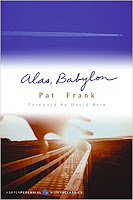Legends about "Little People" can be found among cultures from around the world. In Europe, there are goblins, gnomes, and leprechauns, for example. In Africa, there are the Kondorong and Kolparsi, among others. In Asia, there are stories of the Kenmun and the Bongas. Stories are also told throughout Oceania of little people, like the Menehune in Hawaii who are said to build stone structures at night. It seems that little people are a common trope, and Native Americans throughout the Americas also have their own little people stories.
Across every culture that tells little people stories, there are a lot of similarities amongst the little people. Of course, they're small, ranging from a few inches to 2-3 feet in height. They're often hairy and wear primitive or traditional clothing, if any. They are most active at night and/or in the deepest, most impenetrable, inaccessible forests, deserts, or mountains. More often than not, they are mischievous, stealing things and playing jokes on humans, but, usually, they are very helpful and caring, especially when it comes to children. Stories are told of little people appearing to a lost human and leading him to safety, or even coming to the aid of abused children. They are often depicted as protectors of children, animals, or forests.
I've recently read two books that deal with Native American little people. The first, Midnight Son, is not really a book. It's an Audible Original, but it feels like it may have been a podcast first. It's the true story of an Alaskan native named Teddy Kyle Smith, who was starting a career as an actor in independent films in 2012, when things seemed to fall apart for him. When his mother died, he seemed to snap. He went into Alaskan wilderness to hide out, and he shot and wounded a couple of hunters who unknowingly found his hiding place. A massive manhunt ensued, and he was captured. When he was captured, he immediately told stories of encounters with the little people of Native Alaskan legend, the Inukuns. I won't say anymore, but I thoroughly enjoyed listening to this. It was short, and it was extremely well-told by the writer, James Dommek Jr, an Alaskan Native himself, who knows the area and people who knew Smith.

























